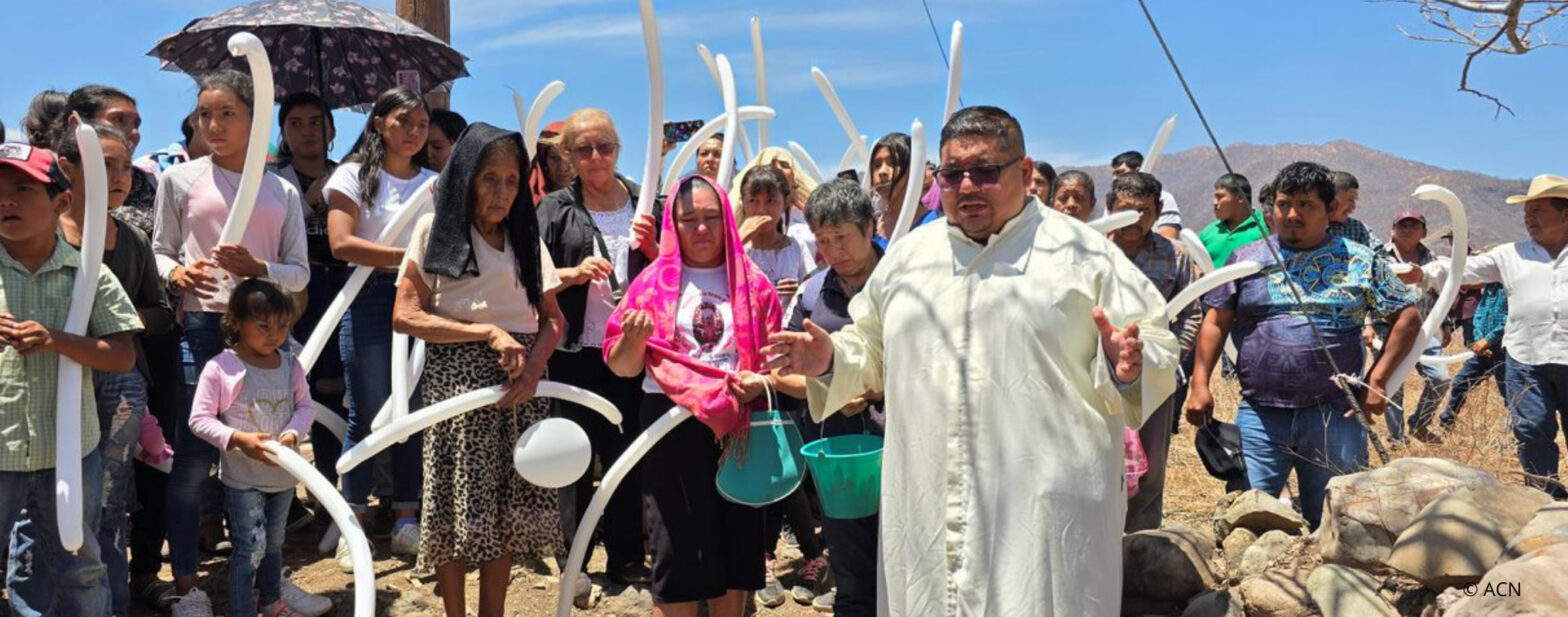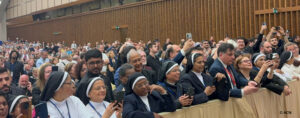“I feel like a war chaplain”
On June 2, Mexicans went to the polls and, for the first time in their history, elected a woman to the country’s presidency, Claudia Sheinbaum. She is considered by many observers to be the runner-up to her predecessor, Andrés Manuel López Obrador.
Among the challenges that await her during her term of office, she will have to contend with an outbreak of uncontrollable violence. During the electoral process, 45 attacks on politicians were recorded, with 30 candidates assassinated. In the Diocese of Chilpancingo-Chilapa, Father José Filiberto Velázquez Florencio—known affectionately as Father Fili—is the director of the Minerva Bello Center for the Rights of Victims of Violence, an institution that documents cases of violence in the diocese.

In the Diocese of Chilpancingo-Chilapa, Father José Filiberto Velázquez Florencio—known affectionately as Father Fili—is the director of the Minerva Bello Center for the Rights of Victims of Violence, an institution that documents cases of violence in the diocese.
He began to document human rights violations in 2022, in a community called Nuevo Poblado El Caracol, when the local parish priest called him, in desperation, because he had 500 displaced faithful taking refuge in his church, and he needed help. Thus began his visits to the mountain range in Guerrero, carrying humanitarian aid, documenting cases of violence, and identifying the perpetrators.
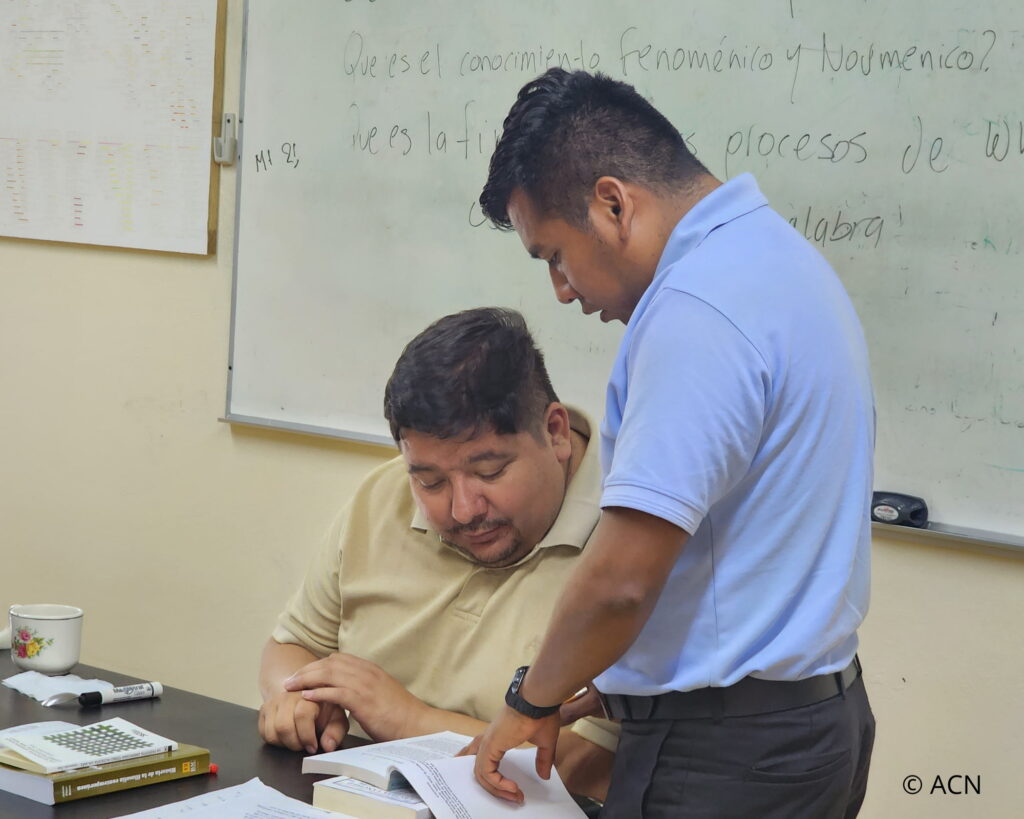
Mexico is currently enduring the highest levels of violence of the past six years. In regions that are particularly hard hit by the conflicts between armed gangs, such as Guerrero and Michoacán, the intensity and frequency of the violence evoke actual scenes of war.
Like other institutions in Mexico, the Church is not exempt from telephone extortions, threats, frauds, protection rackets surrounding the opening of new churches, or attacks on Church property. Father Fili tells Aid to the Church in Need (ACN): “As a priest, I can testify to the fact that this country is going through an armed conflict. Many people choose to dedicate themselves to organized crime, destroying church buildings and using technology to spread terror and panic.”
As an example, he tells ACN about a case in November 2022, when criminal gangs used drones laden with explosives to strike the communities in Guerrero. “This isn’t Afghanistan or the Gaza Strip I’m talking about; this is Mexico. This led the communities to flee and hide from the violence. Chapels, schools, and public squares were damaged. People abandoned their economic activities to save their lives. There is plenty of poverty, but there is even more fear,” he says.
Hidden persecution and hostility on all sides
Mexico has a long history of violence and crime, but one of the most complicated moments the priest can recall came in January and February of 2024, with running battles between criminal organizations in the Guerrero region. The Church played an important role as intermediary to try and forge a truce between the groups. Father Fili explains that the Church’s position was not to whitewash the sins of the criminals, but to act as a go-between in a situation where there was no dialogue, to try and find a solution that would at least lead to the different sides laying down their arms, in the interest of human rights.
“These were very difficult months,” Father Fili recalls. “We went weeks without public transport, school was suspended, the sick were unable to go to hospital. So, the Church spoke to those who were causing the terror, and this allowed us to solve the crisis.” Despite the Church’s positive role, however, it became the target of discreet persecution on the part of political agents. “We suffered hostility from the authorities, who stigmatized us and linked us to organized crime, using expressions such as ‘crime bishops’ or ‘narc priests.’”
These incidents of defamation and persecution are just one more obstacle in the ongoing effort to achieve peace and take the Gospel to these conflict zones where, he admits, he feels like “a war chaplain.”
But the situation also evokes the words of Saint Óscar Arnulfo Romero of San Salvador, who was martyred for his prophetic work in 1980.
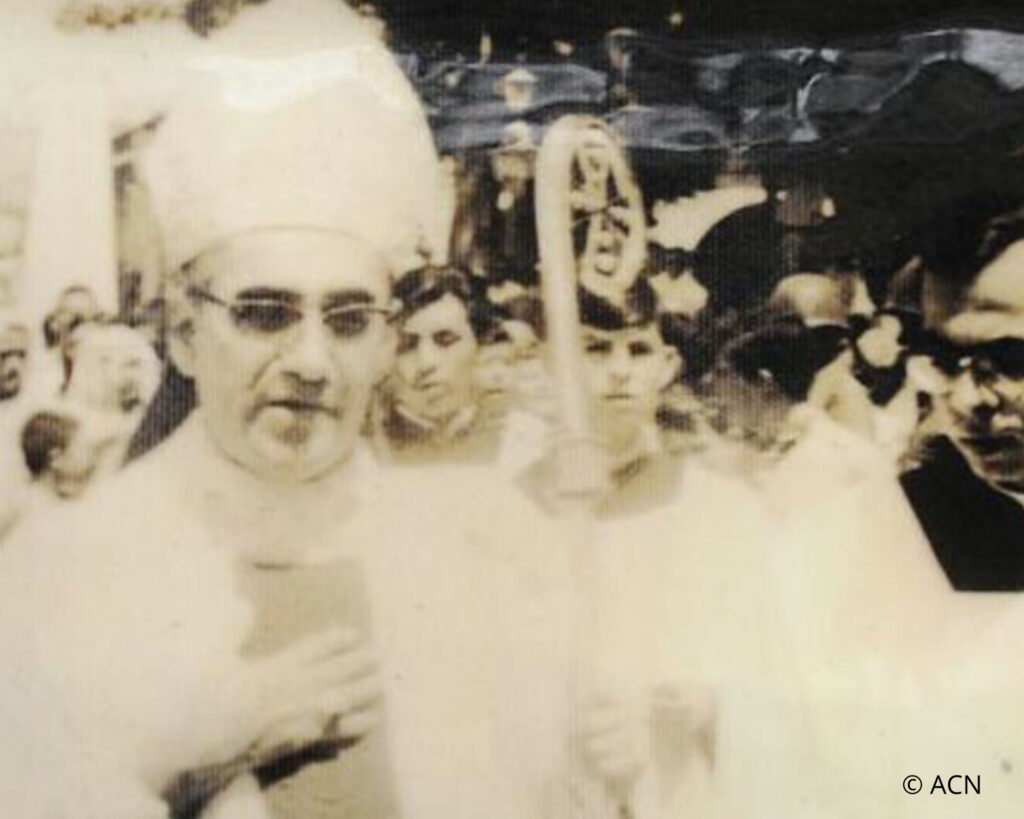
“Many are scandalised and say we are exaggerating, that the Church is not being persecuted … but this is the historical mark of the Church; it will always be persecuted. A doctrine that calls out immorality, that preaches against abuse, that preaches good and attacks evil; is a doctrine put in place by Jesus Christ to sanctify hearts and renew societies, and naturally, when in that society, or in that heart, you find sin, selfishness, rot, envy and greed, sin jumps like a snake when you try to stamp on it, and persecutes he who is trying to chase out evil and sin. Therefore, when the Church is persecuted, this is a sign that it is fulfilling its mission.”
Death threats
Throughout his struggles for peace, Father Fili has survived armed attacks and is currently the target of death threats. Despite all this, he claims he is not “in love with martyrdom,” but rather “in love with the Gospel.”
In 2021, he was abducted by 50 armed men while on his way to celebrate Mass in a community in Guerrero and was close to being executed. He spent hours on his knees, hoping somebody might come to his rescue. The locals began to negotiate with the armed men not to kill him, and the intervention of the community priest was crucial in saving his life.
On another occasion, on October 19, 2023, Father Fili was driving along a mountain road when men on a motorcycle overtook him and shot at his car. One of the bullets hit a tire and the other struck the passenger’s seat. Fortunately, the priest was travelling alone. “This attack was a clear warning for me to keep quiet, to stop denouncing, to stop preaching, to stop helping, to stop practicing charity.”
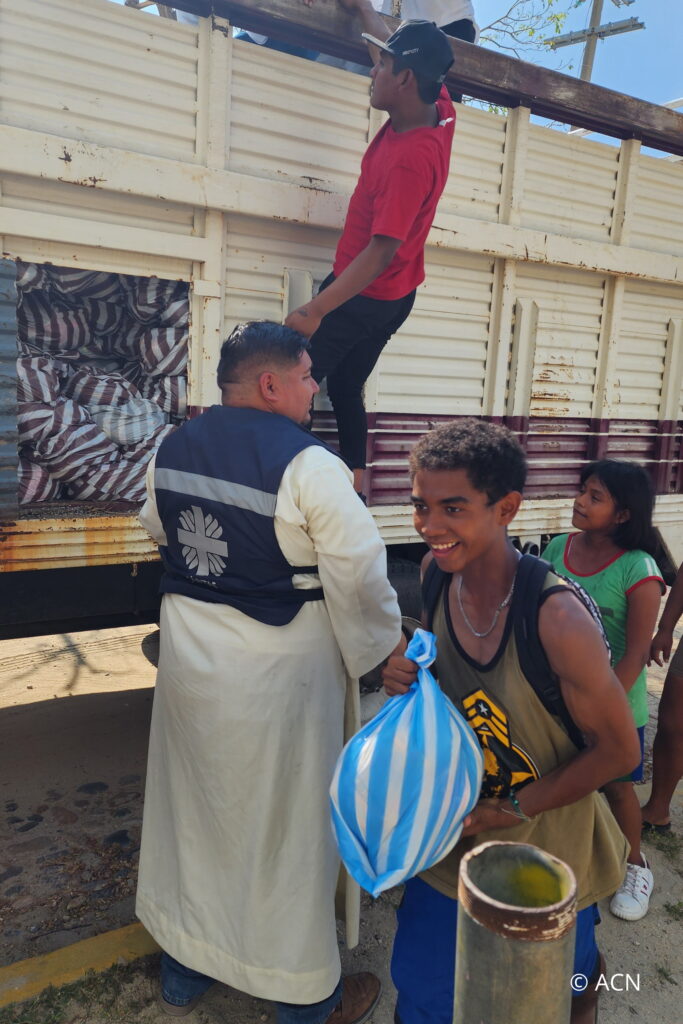
After the attack, the bishop of Chilpancingo-Chilapa, José de Jesús González Hernández, offered to assign him to a new post to ensure his safety, since it no longer seemed prudent to remain in Guerrero State. The bishop shared how painful it was for him and for the community to lose a priest, and how difficult it had been when he was bishop of the Territorial Prelature of Nayar and three of his priests were murdered. “I don’t want to lose another one,” Bishop González begged.
A few days later, while Father Fili was considering the possibility of a move, the terrible Hurricane Otis struck that region of Mexico, leaving a trail of destruction in his communities. The priest got to work with the rescue efforts, distributing humanitarian aid provided by Caritas—the official body of the Church to coordinate charitable and social aid action—to the areas most affected by the natural disaster.
That situation convinced him to stay, and today Father Fili continues to work in the Diocese of Chilpancingo-Chilapa: “I don’t live in fear, but there are times when I am overcome with anguish, when the danger levels increase. I have often cried, but I am comforted by the knowledge that I am not alone, and that God consoles me in times of trouble.”
40 priests killed in 18 years
Mexico is considered the most dangerous country in Latin America to be a priest. Over the past 18 years (three presidential terms), 40 priests were killed, including two Jesuits who were shot in a church in Chihuahua State in June 2022.
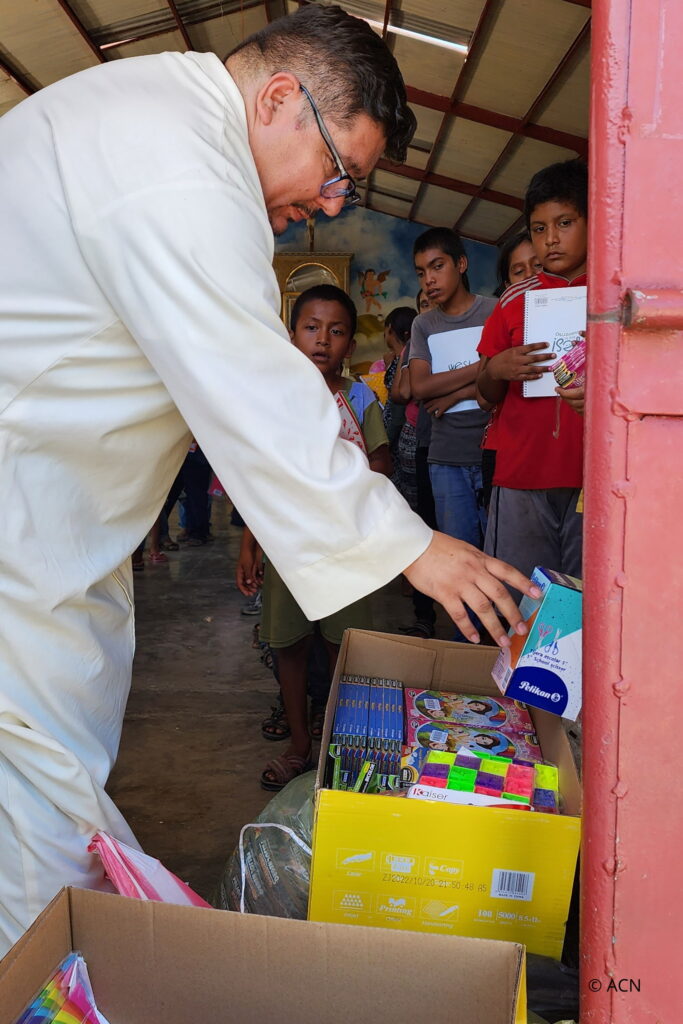
When asked what convinced him to sit down and negotiate with armed gangs, the priest tells ACN that: “The Church is not a club of saints. Our contact with members of the world of organized crime shows what the Church is all about: mercy. We don’t close the doors of Heaven to anybody, and we can sit and talk to these people as we do with any other sinner.”
In any case, it is impossible for Father Fili not to have contact with the criminals, since they live in the same communities where he has parishes, and attend religious festivities. “When they open this door to dialogue, it gives me an opportunity to speak to their consciences and to their hearts.”
Guerrero State belongs to what is known as “Tierra Caliente” (Hot Land), which, besides describing the climate, also reflects the complex social and security reality. The region is the stage of territorial disputes such as the control of routes for drugs, human trafficking, and illegal mining or farming products. At least 16 separate criminal groups—“Los Ardillos,” “Los Tlacos,” “Guerreros Unidos,” “La Familia Michoacana,” the “Jalisco Nueva Generación” cartel, or the “Sierra” cartel, among others—fight for dominance.
In Guerrero, one is under constant fire, just like in a war. Despite being a target for attacks and hostility from different gangs and institutions, the priests persist in their commitment to the affected communities, accompanying victims, raising their voices against violence, and denouncing injustice.

